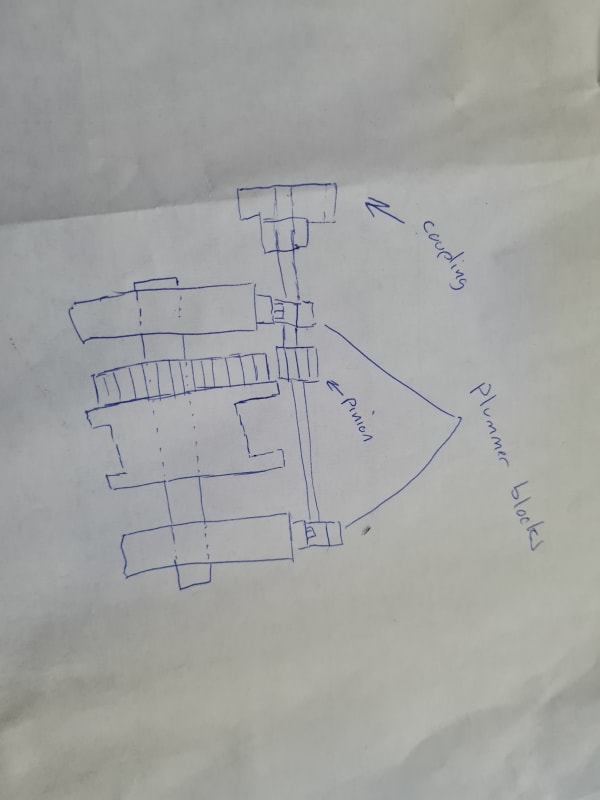DiamondDave
Mechanical
Hello guys, ive been trying to work something out that is likely contributing to crane skew.
So a loose keyway was found on the drive shaft which has resulted in elongstion on the coupling and shaft keyways thus crating backlash. Id say approximately 12mm of play exists here now.
Both crane drice wheels are driven by a common shaft so this play results in one side driving befoee the other.
I would like to try and work out how much further one side drives before the other side catches up.
The drive shafts contains a pinion at each end which connects to a large gear ring attached to the drive wheels.
Ive attempted to work it our bur I feel that the displacement I get is far too large but then again could be entirely possible.
So a loose keyway was found on the drive shaft which has resulted in elongstion on the coupling and shaft keyways thus crating backlash. Id say approximately 12mm of play exists here now.
Both crane drice wheels are driven by a common shaft so this play results in one side driving befoee the other.
I would like to try and work out how much further one side drives before the other side catches up.
The drive shafts contains a pinion at each end which connects to a large gear ring attached to the drive wheels.
Ive attempted to work it our bur I feel that the displacement I get is far too large but then again could be entirely possible.

